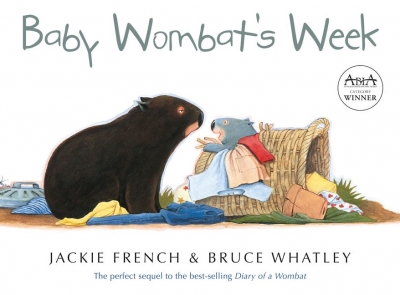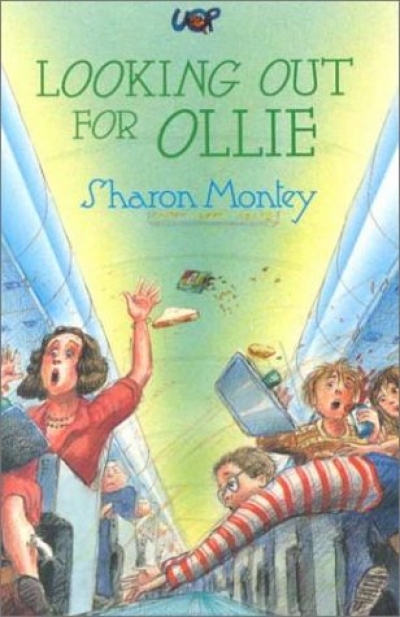Children's and Young Adult Books
Swans are said to mate for life and The Stone Swan builds on the love and anguish of such a relationship as the focus for a lesson in environmental responsibility. A pair of swans, lagging behind the rest of their flight, take solitary refuge in a wetland adjacent to a new housing estate, unaware that it is targeted for ‘development’. The cygnets hatch as the water levels subside and the male swan becomes trapped in a tangle of exposed rubbish and plastic twine. He is near death from exhaustion when a child from the nearby estate finds and frees him. But the peril is not over, for a causeway is being built across the wetland, isolating the swan family from the rest of the flock. The male manages to climb to the top of the roadway, but he will not go on without his mate and she will not leave without her babies. The story ends as she and her young, now fully fledged, fly off to join the flock on their annual migration while the human child witnesses her last farewell to the swan-shaped stone that has appeared on the causeway. Bell’s sombre illustrations in ink and watercolour reinforce the tragic mood of the story. A final page provides background information and references for this timely picture book that could be used effectively in primary school ecology studies.
... (read more)Girls like books about friends and relationships. Boys like books about explosions and sport. Right? Like any generalisation based solely on gender, the answers are, invariably, ‘yes’; ‘sometimes’; ‘up to a point’ and ‘of course not’. This latest grab bag of junior fiction contains its fair share of ‘girlie’ books about friendship and ‘boyish’ books about sport. Thankfully, there are also some books to cater for other sections of the spectrum, including sensitive explorations of boys’ friendships and robust girls who trek up mountains.
Meg McKinlay’s Annabel Again (Walker, $14.95 pb, 143 pp, 9781921150104) lands us squarely in girlie territory. When Livvy’s best friend moves away, her world folds. With the best of intentions, her New Age mother hatches a plan to help Livvy forget about Annabel, as quickly as possible. But one year later, Annabel returns and Livvy believes things will be just the same again. But Annabel is distant and hostile, and nothing is the same. Can their friendship be resurrected? This book covers familiar ground, but the treatment of the girls’ friendships is refreshingly angst-free. This is a quick, humorous read that highlights both the strength and delicacy of friendship, and offers some sound advice about when not to listen to your mother.
... (read more)Jump, Baby! by Penny Matthews, illustrated by Dominique Falla & Baby Bear Goes to the Park by Lorette Broekstra
Baby Wombat's Week by Jackie French & Bruce Whatley & Jasper & Abby and the Great Australia Day Kerfuffle by Kevin Rudd & Rhys Muldoon
In the current overwhelmingly dour landscape of Australian children’s fiction, it’s a welcome relief to pick up three books which at least claim to rely on humour for their effect. Of course, humour comes in different forms, with different purposes.
In Small Sacrifices, for instance, Beverley Macdonald isn’t looking for easy laughs. By its contrast with the harrowing events which constitute the story’s climax, the humour Macdonald injects into the first two thirds of the book effectively maximises the impact of the tragedy. Central to the fun at the beginning are the members of the bizarrely extended family belonging to the narrator, fourteen-year-old Harry. We meet them as they gradually assemble for Christmas at a beachside house in the town where Harry’s artily eccentric grandmother lives.
... (read more)Blyton got rid of them, Dahl demonised or mocked them but adults are definitely central in the lives of young people in this recent trio of books for the emerging to the retiring adolescent.
The Keeper (Lothian, $12.95 pb, 160 pp) is aimed at the younger end of adolescence, perhaps written with the view that such readers will be willing to suspend disbelief as they will need to in this romantic story of a troubled young boy’s search for a father. Joel is twelve and lives with his grandmother on the Yorke Peninsula, and fishing is his love but fighting his tormentor, Shawn at school, and generally being disruptive, takes up much of his time. However, from the outset we are alerted to Joel’s essential goodness when he defends the meek Mei who will not fight back.
... (read more)Publishing non-fiction books for young adults and children demands creativity, invention and a dash of bloody-mindedness. Our relatively small population means that non-fiction books must make their way in an ever-tightening market. Big-budget ‘wow factor’ titles like the design-heavy Pick Me Up (Dorling Kindersley) and the best-selling The Dangerous Book for Boys (Conn and Hal Iggulden) are largely beyond the scope of the domestic market. Both have been international hits. Without the audience base to launch such books, Australian writers and publishers must work to a tight brief, navigating between the relatively small market and the diminishing school library budget. To succeed, these books need to work outside the school context as well as within.
... (read more)Last year, the Tamworth Regional Council voted not to accept five Sudanese refugee families into their township. The decision was reversed in January 2007, albeit with qualifications and overtly racist reactions from some locals. In our post-Tampa society, such seemingly xenophobic reactions have become frighteningly normal, especially at the government level. We will ultimately be a much poorer country if such attitudes become entrenched. Luckily, a number of Australian children’s authors and illustrators have been doing their best to ensure that this does not happen, and some of them are examined here. Author–illustrator Bob Graham prefaces his picture book Jethro Byrde Fairy Child (2002) with an apt quote from The Bible: ‘Let Brotherly Love Continue. Be not forgetful to entertain strangers: For thereby some have entertained angels unawares’ (Hebrew 13: 1, 2). Jethro Byrde is a beguiling tale in which a small child treats strangers with kindness, and thus brings wonder into her own life.
... (read more)



